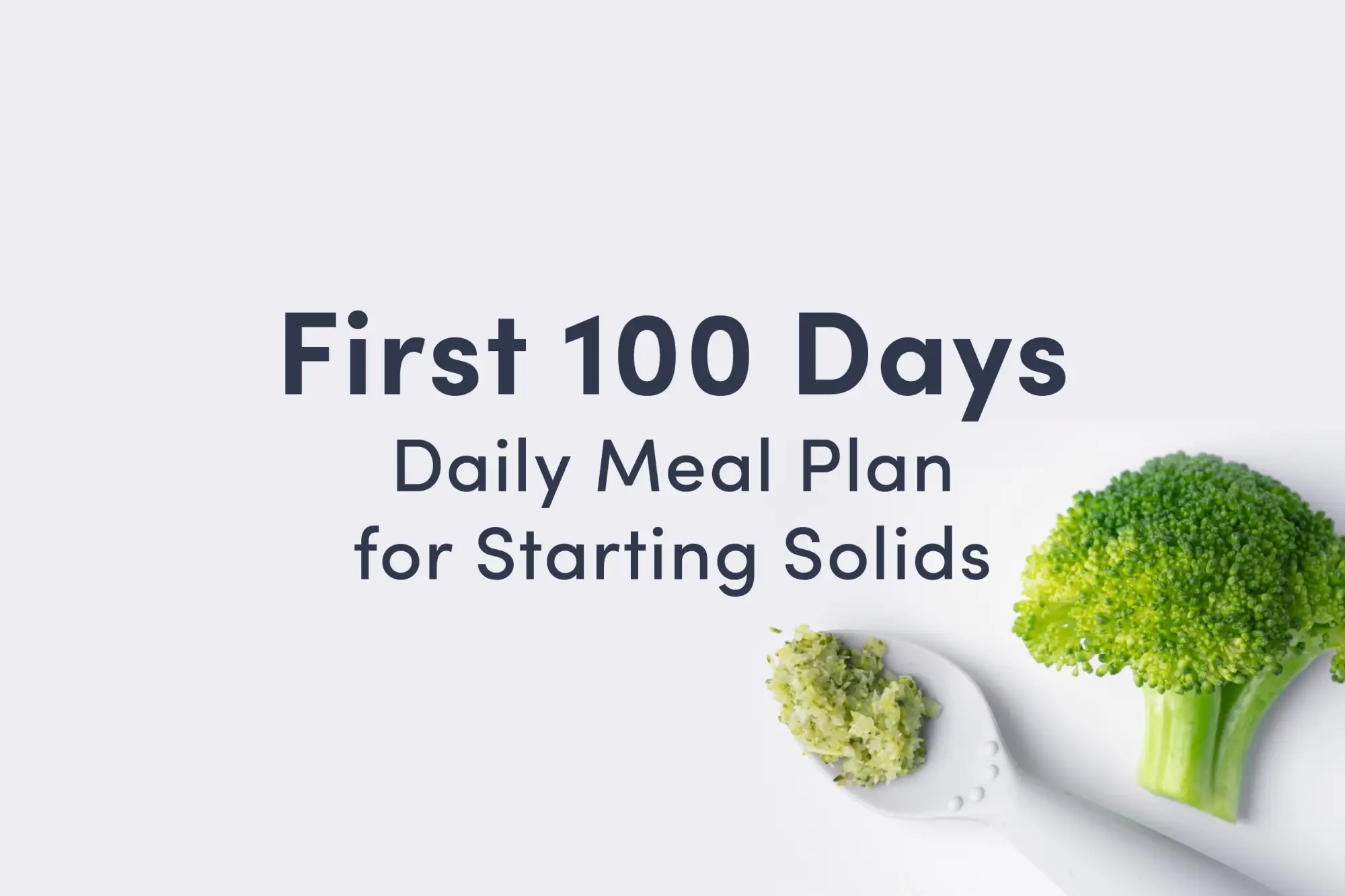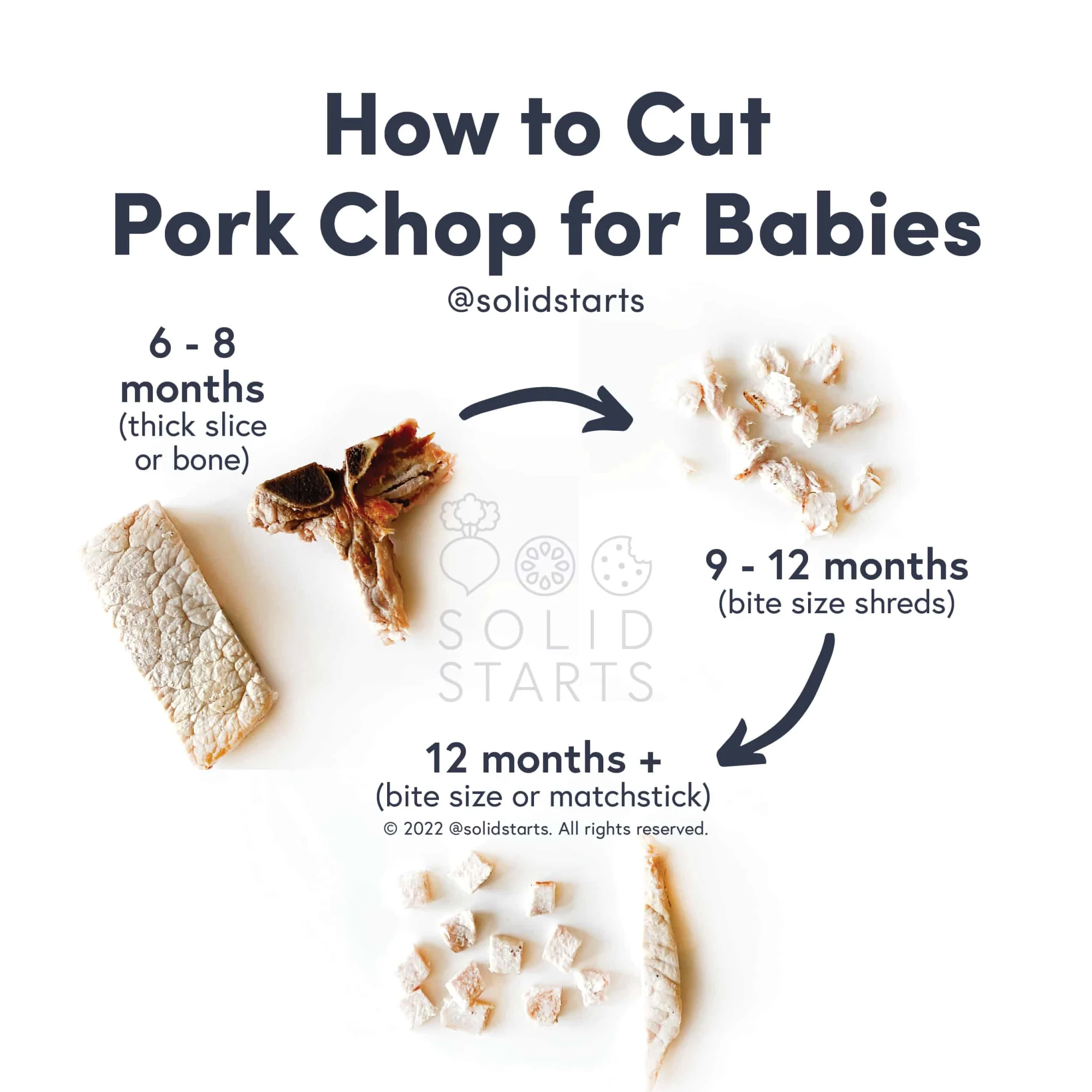Pork
Meat
Age Suggestion
6 months
Iron-Rich
Yes
Common Allergen
No

When can babies have pork?
Pork, when well-cooked, may be introduced as soon as baby is ready to start solids, which is generally around 6 months of age.
Humans have been raising domestic pigs and hunting wild boar for tens of thousands of years, and it has long been the world’s most consumed meat, despite two world religions that prohibit its consumption. Pork is cured to make bacon, sausage, and other preserved meats and freshly cooked into myriad dishes, from Canadian tourtière to Cantonese char siu to Cuban lechon. In fact, cooks put the entire animal to use – from rich stews flavored with hocks and trotters, to crunchy cracklins made of fried skin, to jellies and sauces made of pork blood.
Is pork healthy for babies?
Yes. Pork is rich in protein and fat, in addition to iron, choline, selenium, zinc, and vitamins B6 and B12. Together, these nutrients support growth, brain development, energy to play and explore, healthy red blood cells, taste perception, immune health, hormone function, metabolic processes, and more.
★ Tip: Cook pork chops and other cuts of fresh pork to 145 degrees Fahrenheit (63 degrees Celsius) and cook ground pork to 160 degrees Fahrenheit (71 degrees Celsius) before serving. Undercooked and raw pork poses a high risk of foodborne illness and is associated with trichinosis (a parasite infection), taenesis (a parasite infection), yersiniosis (a bacterial infection), and other diseases.
Is pork a common allergen?
No. Pork is not a common food allergen, although reactions to pork have been reported. Certain tick bites (mainly the Lone Star tick in the continental United States, but other ticks in different parts of the world), are associated with the development of an allergy to galactose-alpha-1, 3-galactose (“alpha gal”), a sugar which is present in all non-primate mammalian meat. This results in a delayed allergic reaction 3-8 hours after red meat, such as pork, is consumed. However, some individuals with alpha gal allergy also react to small amounts of the sugar present in dairy products, gelatin, or organ tissues from mammals. Alpha gal allergy is more prevalent in the southeastern United States but is starting to become more common in other areas as the geographic distribution of the Lone Star tick expands. Although rare, some individuals with cat allergies may also develop a cross-reactive allergy to pork, a condition known as pork-cat syndrome.
As you would do when introducing any new food, start by serving a small amount at first. If there is no adverse reaction, gradually increase the amount served over future meals.
Is pork a choking hazard for babies?
Yes. Pork can be firm and challenging to chew, which are qualities that increase the risk of choking. To reduce the risk, refrain from cutting pork into chunks or cubes and prepare and serve it in an age-appropriate way as described in the How to Serve section. Also, be sure not to overcook pork as this causes it to be dry and more challenging to chew and move backwards to swallow. As always, make sure you create a safe eating environment and stay within an arm’s reach of baby during meals.
Learn the signs of choking and gagging and more about choking first aid in our free guides, Infant Rescue and Toddler Rescue.
Videos
Can babies have pulled pork?
Yes. Babies can eat pulled or shredded pork as soon as they are developmentally ready for solids, generally around 6 months of age. Because the small pieces of pulled pork may be challenging for babies to pick up before the pincer grasp develops (typically around 9 months of age), consider serving pulled pork mixed into a soft food that baby can scoop, like porridge, mashed vegetables, or sour cream. When sharing pulled pork with babies under 12 months of age, make sure that any sauce or seasonings do not contain honey, due to the risk of infant botulism.
Is pork a white meat or a red meat?
Pork is a red meat, though a generation of Americans know it otherwise. Confusion stems from an advertising campaign in the 1980s. At that time, United States pig farmers saw an opportunity when chicken began to compete with beef as America’s favorite meat. The industry launched a campaign to promote pork as “the other white meat” to an increasingly health-conscious American public, and the catchy phrase worked.
How do you serve pork to babies?
Every baby develops on their own timeline, and the suggestions on how to cut or prepare particular foods are generalizations for a broad audience.
6 months old +:
Offer baby a pork chop on the bone with most of the meat cut off (make sure no parts of the bone are brittle). You can also serve strips of pork chop about the size of two adult fingers pressed together or the pork chop bone (with any loose cartilage, meat, or fat removed) for baby to suck and munch on. Cooked pork can be quite resistive, and baby may not swallow much, which is completely fine. If baby succeeds in biting off a big piece of meat, take a deep breath and give the child the opportunity to work with the food independently. Coaching baby to spit out big pieces of food by sticking out your own tongue can be helpful, too. You can also serve pulled pork mixed into a soft, scoopable food like mashed fruit or vegetable. Lastly, you can offer meatballs or meatloaf made from ground pork; just make sure the food is fully cooked to 160 F (71 C), soft enough that it mashes between your thumb and pointer finger, and larger than baby’s mouth.
9 months old +:
Offer pieces of pulled pork, either on their own or mixed into other foods, as well as bite-sized shreds of pork for baby to pick up with their developing pincer grasp (where the thumb and pointer finger meet). You can also offer bite-sized pieces of meatball or meatloaf made from ground pork; just make sure the food is fully cooked to 160 F (71 C) and soft enough that it mashes between your thumb and pointer finger. Cooking ground pork in sauce or stew or mixing breadcrumbs, egg, and/or milk into meatball or meatloaf can help keep them soft.
12 months old +:
Offer bite-sized pieces of pork as finger food or let the toddler practice with a utensil, and continue to offer ground pork, pork meatballs and meatloaf, and pulled pork as desired. To reduce the risk of choking, refrain from offering chunks of pork or serving perfectly sized cubes.


Written by
Expert Tips Delivered to Your Inbox
Sign up for weekly tips, recipes and more!
The content offered on SolidStarts.com is for informational purposes only. Solidstarts is not engaged in rendering professional advice, whether medical or otherwise, to individual users or their children or families. No content on this site, regardless of date, should ever be used as a substitute for direct medical advice from your doctor or your medical or health professional, nutritionist, or expert in pediatric feeding and eating. By accessing the content on SolidStarts.com, you acknowledge and agree that you are accepting the responsibility for your child’s health and well-being. In return for providing you with an array of content “baby-led weaning” information, you waive any claims that you or your child may have as a result of utilizing the content on SolidStarts.com.








